
chubbs
-
Posts
3,912 -
Joined
-
Last visited
Content Type
Profiles
Blogs
Forums
American Weather
Media Demo
Store
Gallery
Posts posted by chubbs
-
-
Spot checking the Philadelphia airport, there is no trend in the highest march temperature. Max is 87 in 1945. No wonder Martz and Chesco like this stat. Funny because Chesco's other favorite is the philly airport heat island.
Edit: Added the minimum temperature for March at the airport. Here there does appear to be a rising trend in recent decades, but the warmest is 30F back in 1942.
-
1 hour ago, bluewave said:
Very impressive warmth.
In January ERA broke the record by 0.15C, while GISS only broke by 0.03C, Berkeley Earth by 0.05C and NOAA by 0.07C. ERA broke the February record by 0.12C, a little lower than Jan. We'll see how the obs come in Feb, probably another record month across the board but not guaranteed.
-
13 minutes ago, TheClimateChanger said:
Warmest February on record in UAH at +0.93C. Also ties October 2023 for highest anomaly of any month.
This nino is having an unusually large impact on UAH. The red 13-month average will continue to rise for several months as cool months come off. Clear now that the period after the 2016 nino is different in UAH than the period after the 1998 nino. I see 2 explanations: 1) we have better satellites now that are not impacted by diurnal drift, or 2) The urban heat island is starting to impact satellite measurements

-
On 2/9/2024 at 9:25 PM, donsutherland1 said:
It’s an interesting paper and it confirms “tipping” behavior related to the AMOC. Tipping abruptly from one stable state into another one has been found elsewhere, so I don’t believe it is too surprising that researchers found that the same could hold true for the AMOC. IMO, had they found against tipping, that would have been a more surprising outcome.
The full paper is here:
https://www.science.org/doi/10.1126/sciadv.adk1189
Below is an interview with the lead author, which provides good background for understanding the study implications. The unrealistic modeling scenario is needed because current models are inadequate. Not the best position to be in with the system trending toward less stability.
.
-
 3
3
-
 1
1
-
-
This nino continues to have atypical timing. Global temperature anomalies have plateaued since September, instead of continuing to rise into a typical Feb/March peak. Don't think a record is a slam dunk this year. Will depend on how fast and far the decay is as nino----> nina.
Also note the warming since 2014, roughly 0.8C, or 10-20% of an ice age. An unusual decade. That may help explain why there is much more discussion of where our winters are headed vs 10 years ago.
-
 1
1
-
-
1 hour ago, Typhoon Tip said:
Kinda of ... ? I don't think capitalism and "price regulatory aspects" need to be mutually exclusive. "Capitalism" isn't the problem.
- doing so unconstrained, thinking it is alright ( or just being oblivious, sociopathic ...etc) to be unencumbered by moral responsibility to the consequences of an unrestrained system? That's where the problem is.
Capitalism is a human invention - we decide. In a very coarse definition, we could say free and fair economic system that is within the confines of moral responsibility - chiefly, to do otherwise and undermine the ability to survive, violates the fundamental principle of being alive, which is to protect the ability to be alive.
What I was saying before is that ... humanity is still not connecting CC with a a threat to that level. Ever hear it said in literature and cinema, "I never quite understood. I knew what it meant, but only now I really get it" - this spiritual awakening to the crisis has not been enlightened yet.
The CC storm is coming ... When the NHC statement warns, "...Preparations need to be rushed to completion... " That's where we fail to connect.
It may be an untenable at this point. The "system" is gotten to be 'too big to succeed', ironically.
Yes, capitalism isn't the problem. The problem is that vested fossil fuel interests don't want capitalism to solve the climate problem and work to keep the deck stacked in their favor. A carbon tax has been a no-brainer for decades as a conservative solution. Also agree that people have a hard time connecting the dots on climate change. One factor, we've never seen climate change before and don't know what it looks like.
-
 1
1
-
-
This paper indicates that man-made aerosol effects on enso can be prolonged, well after the emissions have been reduced. Could help explain recent favoring of la nina.
The discrepancy between the observed lack of surface warming in the eastern equatorial Pacific and climate model projections of an El Niño-like warming pattern confronts the climate research community. While anthropogenic aerosols have been suggested as a cause, the prolonged cooling trend over the equatorial Pacific appears in conflict with Northern Hemisphere aerosol emission reduction since the 1980s. Here, using CESM, we show that the superposition of fast and slow responses to aerosol emission change—an increase followed by a decrease—can sustain the La Niña-like condition for a longer time than expected.
-
 1
1
-
-
Clean energy has become an economic growth engine for China as costs continue to tumble and foreign uptake increases. We are a laggard in an increasingly important economic race.
https://www.carbonbrief.org/analysis-clean-energy-was-top-driver-of-chinas-economic-growth-in-2023/
-
14 hours ago, csnavywx said:
Solar and EV equity prices continue to be smashed, with the TAN ETF down 16% so far this year and 43% y/o/y. Even the best positioned companies are suffering pretty heavy balance sheet hits due to higher rates and higher capex costs, despite hardware component price declines.
Domestic EV makers are being hit in particular due to slumping demand and are sensitive to higher financing costs.
Unless those margins can be improved, R&D and capex will start taking a hit and these deployment rates are going to suffer as a result. Like I mentioned before, costs are important, but we live in a capitalist system -- profit margins are even more important!
I was hoping we'd get some interest rate cuts this year, but the market is starting to price those back out as core inflation remains too sticky/resilient.
-
A spot check of East/Gulf coast tide gauges shows an acceleration starting around 2010. Sea rise is accelerating globally, but not this fast. Change in ocean currents, as discussed above, a possible contributor.
St Petersburg, FL
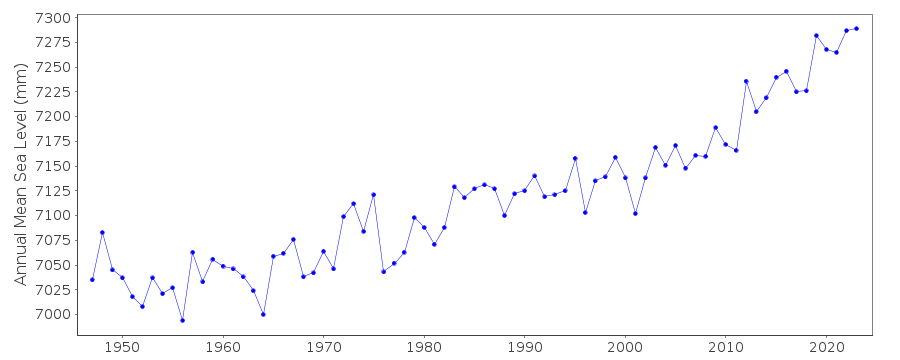
Virginia Key, FL
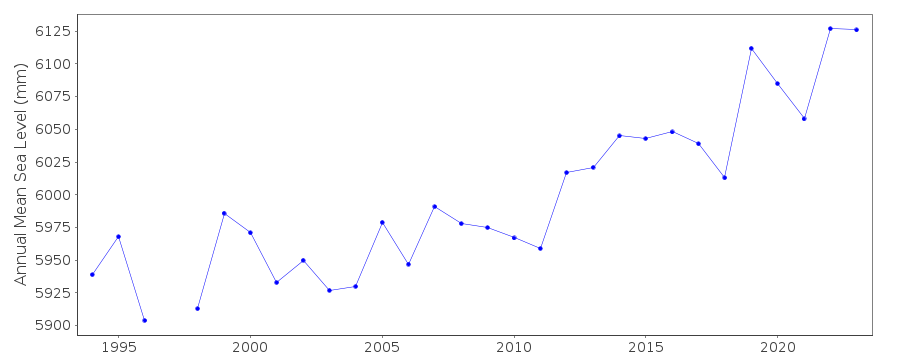
Ft Pulaski, GA
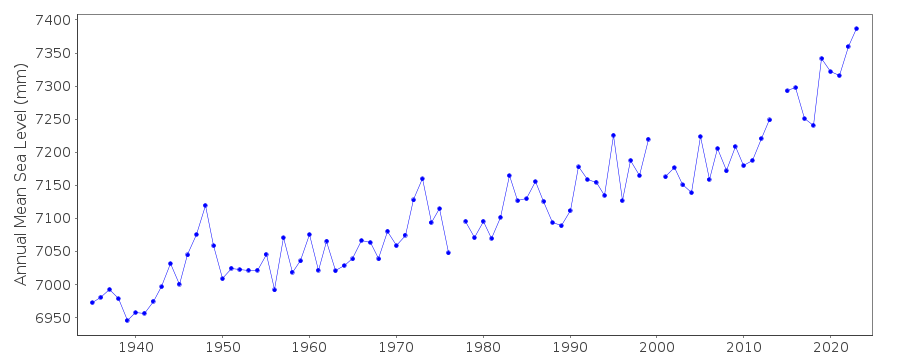
Charleston, SC
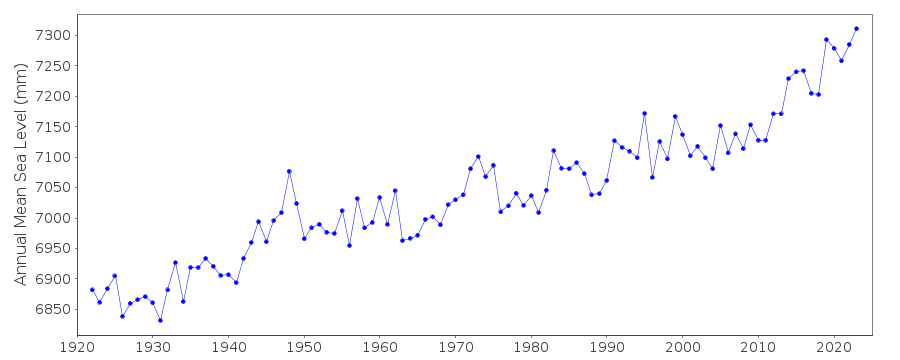
Atlantic City, NJ
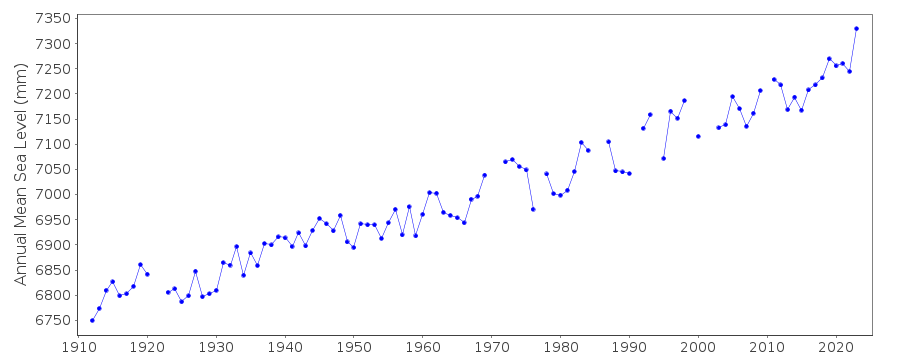
-
 2
2
-
 1
1
-
-
9 hours ago, LibertyBell said:
Humans are extremely resistant to change, this is what it comes down to.
Ironically, in this case resisting change is accelerating change.
-
 5
5
-
 1
1
-
-
6 hours ago, LibertyBell said:
We're already past peak fossil fuel usage aren't we?
Hasn't peaked yet, but rate of increase has slowed. Will peak by 2030 according to IEA. Need to speed things up to hit climate targets.
https://www.weforum.org/agenda/2023/10/iea-energy-peak-fossil-fuel-demand-by-2030/
-
 1
1
-
-
Here's a good free review article on tropical cyclone frequency. Bottom-line: we don't know whether the number of storms will change with climate change. The 78F threshold will tend to increase however because the upper troposphere is also warming. Has to be warmer at the surface to generate the same amount of convection in a warmer world.
https://agupubs.onlinelibrary.wiley.com/doi/pdf/10.1029/2021EF002275
-
 2
2
-
 1
1
-
-
Like batteries, solar is ramping rapidly as costs continue to drop on a well established learning curve. Under this recent forecast, solar will be roughly 10% of global energy use in 2030. This forecast also follows the IEA net zero scenario which has 1000 GW of yearly solar AND wind installation by 2030. Moreover solar could do better, forecasters have been underestimating solar growth since solar forecasting began. Solar exponential growth wouldn't have to continue too much longer beyond 2024 to rapidly turn down fossil fuel use.
-
 2
2
-
-
Tamino's latest on removing 3 main natural factors from global temperature series: enso, volcanoes and sun. Makes the recent acceleration easier to see and statistically significant. My only quibble is whether he has removed all of the enso variation. I don't think that would change the result though, removing more year-to-year variation should make it easier to detect acceleration.
https://tamino.wordpress.com/2024/02/16/adjusted-global-temperature-data/
-
 1
1
-
 1
1
-
-
13 hours ago, csnavywx said:
I'm less sanguine on this than others due to a complete lack of consideration for profits, power density, grid infrastructure or firming costs in virtually all of the analyses. Cost of raw hardware components and the initial margins are always talked about, because they're favorable. In reality, they end up being quite cheap *at first*, but quickly run into firming cost issues as soon as saturation increases. Regardless of whether you like it or not (I sure fuckin don't), we're trying to transition in an almost completely market-based manner and the market is overwhelmingly concerned about returns. Ask GE or Siemens how that's going for them recently with cratering profit margins. Hell, with battery farms, most of the returns at this point aren't even in what you would expect -- power arbitrage. It's in ancillary services! Returns in general were a lot easier in a low inflation, zero-interest-rate environment. Zero consideration is also given to rebound effects. Slow decarbonisation is a trap, as the incremental additional capacity will get used up on growth. Efficiency savings will be spent elsewhere and typically result in *more growth*. You need decarbonisation in large chunks.
Yes the free-market system isn't going to ditch fossil fuels on its own, at least not quickly. The incumbent has large competitive advantage. Everything from installed infrastructure, favorable laws and regulations, to brainwashed media and bought politicians. However, we wouldn't have solar, wind, and EV without past government support. I'd argue that government support is likely to increase, now that commercial success has been achieved. Who wants to be left behind? For instance in the US, IRA has spurred record-breaking investment in the past year.
I suppose we could pull the rug out from under clean-energy technologies in the US, but China, Europe and others would plow ahead without us. On a global basis, investment in clean energy technologies has become much larger than fossil fuel investment. I expect the gap to continue to widen. There are tipping points in economics also.
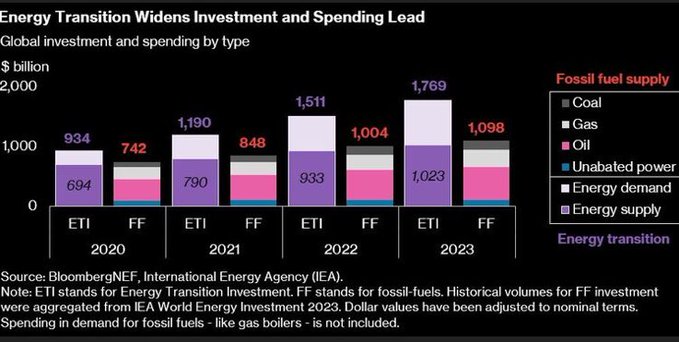
-
Per this study, steep SST gradients near Gulf stream and downstream of East Asia act as winter thermostats under climate change. The SST gradients evolve slowly producing uneven winter warming: relatively cool hiatus decades followed by decades with rapid warming. One more factor to throw into the pot when discussing our winter weather fortunes.
https://www.nature.com/articles/s41467-023-43686-1
-
 1
1
-
 1
1
-
-
10 hours ago, raindancewx said:
Hard to imagine next winter being worse for most of you given the temperatures this winter. My current guess would be another early peaking La Nina. Probably another Modoki La Nina. Don't shoot the messenger, but the Modoki La Ninas kind of suck for the East too.
I'm actually starting to wonder if the semi-persistence of on the ground weather despite different traffic patterns in the Pacific/Arctic is nature's way of bailing the West out of a multi-decade drought.
I would say, overall, this event behaved with some of the tendencies I expected - the subtropical jet was quite strong, but the Gulf of Alaska / Arctic stuff was a bit unusual with the very -PDO / and very +AMO combo.
If we get some insane hurricane season this Summer-Fall, I'll go +5 or more for the SW, with EPO/WPO driven above average snow/brief severe cold for the East, like a 2013-14 / 2017-18 blend. Otherwise, a Modoki La Nina favors the NW / Northern Plains for a cold winter. Intuitively that makes sense, as MN and that region has to burn off their +20 non-sense to end up relatively near long-term averages by year end.
You tilt the odds in your favor by going warm.
-
A report on batteries came out recently. Would be concerned if I worked in the fossil-fuel industry or any industry based on use of fossil fuels. Climate and energy technology are going to continue to change rapidly, whether we are ready or not.
-
 1
1
-
 1
1
-
 1
1
-
-
11 hours ago, bluewave said:
The study still seems incomplete since global warming wasn’t included and the amounts of fresh water entering the Atlantic leading to a simulated collapse were much higher than current levels.
However, to produce this collapse, the researchers had to run the model for 2500 years. And they had to add a huge amount of freshwater – less than in previous simulations, but still around 80 times more than is currently entering the ocean as Greenland’s ice sheet melts. “So that is absurd and not very realistic,” says van Westen.
Moreover, the simulation didn’t involve any global warming. The team now plans to rerun the simulation to include it.
Blog article on study. Including an update at the end that clarifies the implications of the model simulations.
Update 10. February: In the reactions to the paper, I see some misunderstand this as an unrealistic model scenario for the future. It is not. This type of experiment is not a future projection at all, but rather done to trace the equilibrium stability curve (that’s the quasi-equlibrium approach mentioned above). In order to trace the equlibrium response, the freshwater input must be ramped up extremely slowly, which is why this experiment uses so much computer time. After the model’s tipping point was found in this way, it was used to identify precursors that could warn us before reaching the tipping point, so-called “early warning signals”. Then, the scientists turned to reanalysis data (observations-based products, shown in Fig. 6 of the paper) to check for an early warning signal. The headline conclusion that the AMOC is „on tipping course“ is based on these data.
In other words: it’s observational data from the South Atlantic which suggest the AMOC is on tipping course. Not the model simulation, which is just there to get a better understanding of which early warning signals work, and why.
-
6 hours ago, dseagull said:
Fascinating article. Equally terrifying if it were to verify. Unfortunately, most of us have read and consumed a myriad of similar "scary" articles that have not verified over the past 3-5 decades. While this could be the tipping point, this article is only highlighting one of many potential studies that have resulted in any number of potentially devastating outcomes.
This is where sensationalism comes into play. There also exists a tipping point for where people no longer pay attention to every single prediction or publication. CNN is still somewhat mainstream, although part of a dying type of "journalism." Similar to the "boy who cried wolf," many media outlets have overplayed their hands with sensationalism (in an effort to gain clicks or views for advertising profits,) and as a result, reach fewer and fewer members of an audience that is growing skeptical.
Having offered that perspective, I will admit that I am inclined to believe that ocean currents and the rate at which gyres are able to reach and maintain stability, PROBABLY have the most rapid and drastic effects on the climate of our earth. Our oceans (as sinks,) and mediums of thermal energy, are responsible for the vast majority of weather on earth. When the red flags go up, we need to invest resources to determine all possible outcomes.
This sudden of a climate disaster is more in line with other types of geological extinction events. Many scientists have always theorized that this very scenario is responsible for most of the sudden climate swings, not unlike an impact from a large meteor or other space object.
If this sort of cataclysmic even were to verify, there is unlikely any way to prepare for it effectively. The tipping point, would ultimately become an extinction event for a large swatch of the world's population.
Or... this could be just another sensational study and article, following a host of others. This doest mean that we should write it off, but rather delve into the scenario, and scrutinize it carefully. It has very meaningful merit, regardless.
Yes, media is doing a lousy job informing the public on climate science. Science has a good handle on the likely temperature changes vs man-made CO2 emissions. There is no scientific debate than man-made emissions are changing the climate at a rapid rate. The big uncertainty is how will the Earth's systems respond. We are conducting a big science experiment in that regard. Nothing in nature or man-made is designed for the climate we are rapidly headed for. Change is going to continue to accelerate as we pull away from our historical climate. The funny thing is. A world without fossil fuels is looking better and better from an economic standpoint. We are giving ourselves climate angst for no reason, other than we are uncomfortable facing the facts.
-
 2
2
-
 1
1
-
-
4 minutes ago, dseagull said:
I'm not sure how a carbon tax will be used in any meaningful way. I understand your comment, but I see no way in which a "carbon tax" solves any percieved problems that are defined as a "crisis."
You must remember that most people are just trying to get by. The last thing on their mind is climate change. They don't want to pay 3x more for wind generated electricity. They don't have money for an electric vehicle. They can barely afford rent, even with government subsidies.
I admire the people who believe that humans can lower global temperature, because that is admirable conviction. But, how will you achieve this? The world doesn't work this way. By all means, try to make the earth a cleaner and healthier place to live, but raising and lowering global temperature through carbon reduction is setting an unrealistic goal at this point in time.
The man-made problems that we are facing right now (literally as I type this,) are much more dire. Those problems are not related to climate change, which does not meet "crisis" criteria for 99 percent of the world's population.
Our biggest threats are immediate. Let's address those problems and then collectively brainstorm our way out of other issues, after we unify and heal from the societal issues that are man-made and intentional, rather than unintentional (carbon production.)
You will not see a world in which anthropogenic climate change can be accurately and honestly assessed and addressed until human beings solve those immediate issues.
Again.... we have MUCH MUCH bigger problems to focus on in the near-term. All signs point to some very dark times ahead for us.
Well you views are much different than mine. Fossil fuels are steadily losing competitive advantage. Wind, solar, EV are all much cheaper than they were a decade ago and growing rapidly on a global basis, often without subsidies. I think we will be kicking ourselves in a decade for not ditching fossil-fuels earlier.
-
 1
1
-
 1
1
-
-
26 minutes ago, dseagull said:
The bunkers are for the civil unrest that results from authoritarian measures and the same brainwashed fools that went bonkers (and still are bonkers) from the "pandemic."
It's all about control. NOBODY is denying that the climate changes or that anthropogenic climate change (to some extent,) is real. We disagree with the suggested measures, the gaslighting, and the propaganda. (All for profit and power.)
If people would come together and develop sane solutions to problems instead of falling for "crisis after crisis," they wouldn't be so easily controlled and manipulated. If you think your government cares about you in 2024, you need to wake up.
Having said all of that, It is America. You are free to believe what you would like to believe and say what you would like to say. It is your God given right. What you are not free to do is dictate how other free citizens in our republic would like to live our lives without interference from our government or a "global governing body."
The next few years are going to be unimaginably difficult for many Americans. This has nothing to do with climate change.
I would love to see a conservative solution to climate change. For instance a carbon tax with the monies used to reduce income taxes or the deficit. Has been a no-brainer for decades. By letting the problem fester, conservatives are inviting a big government solution
-
 1
1
-
 1
1
-
-
1 hour ago, TheClimateChanger said:
Countywide averaging is not an adjustment, though. The countywide average can, in fact, be less than all official observing sites if the observing sites are located generally in warmer locations (low elevation, latitude). The county averages shown by NCEI are still often lower than the official temperatures.
This is a good comment. The 4-station average is not representative of the county. All 4 stations are at low elevation and the coldest, Coatesville, is the most centrally located. Others are on the warmer south and east side of the county. Below are the station bias adjustments for Coatesville (based on material downloaded from the GISS site a while ago). They are generally smaller than the ones Paul calculated and can be negative. The average is 0.8F. I have also shown the difference between NOAA County temps and the bias adjusted temperatures for Coatesville. The measured values for Coatesville with proper bias adjustment are close to the NOAA County values. On average NOAA is 0.1F warmer than the corrected observations. Remember that Coatesville best represents the county as a whole, albeit at lower elevation than most of the county. Pretty good job by NOAA I would say. This looks like a tempest in a teapot to me.
-
 2
2
-

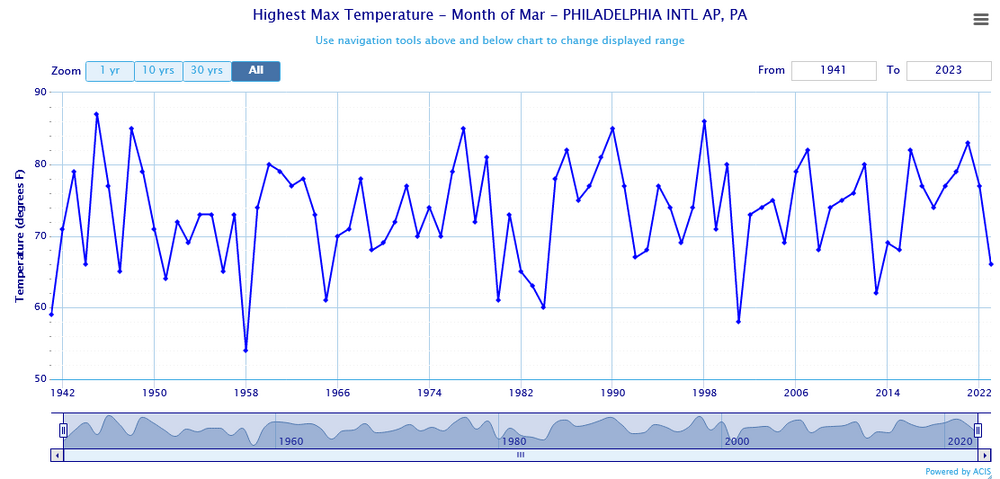
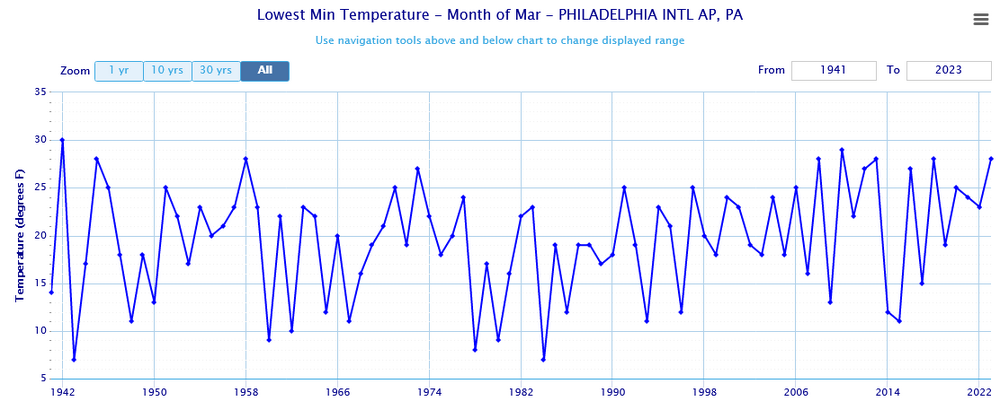
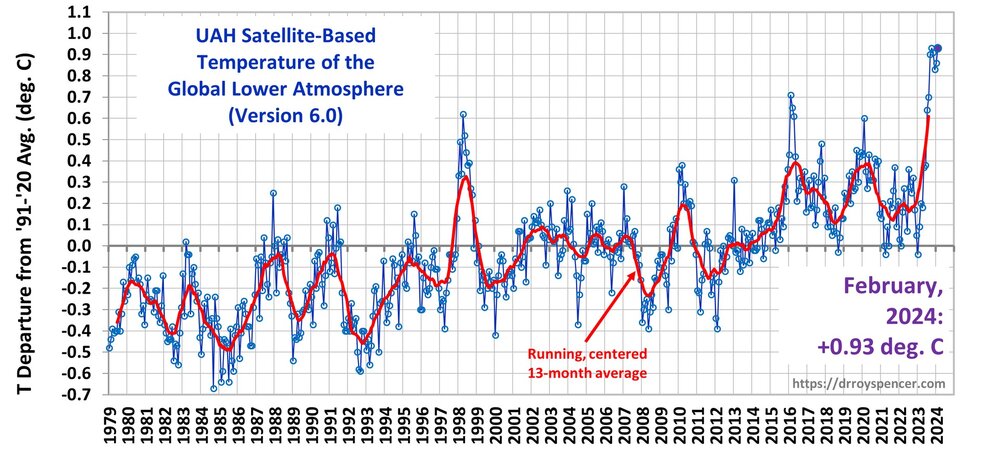
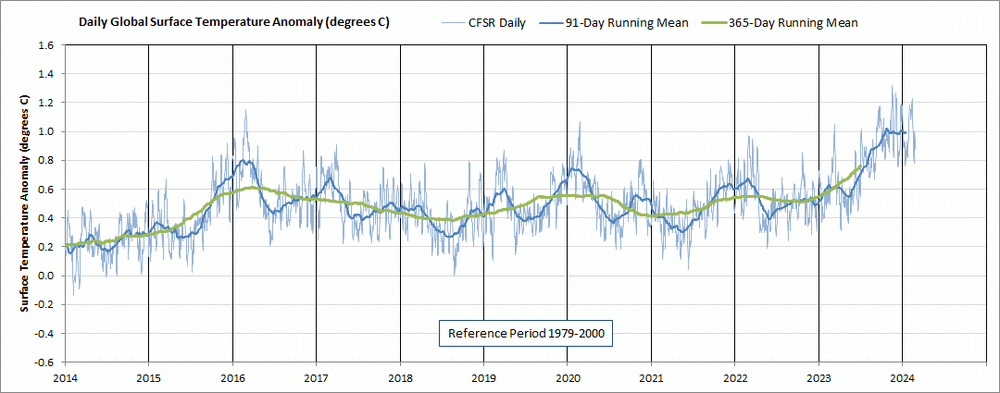
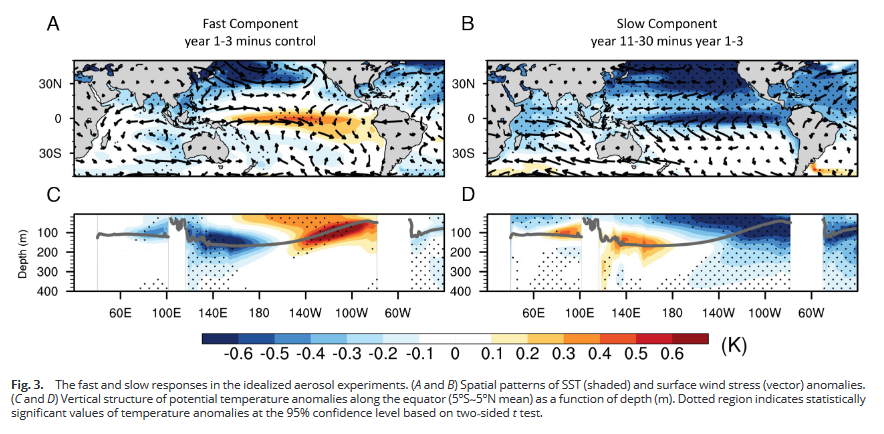
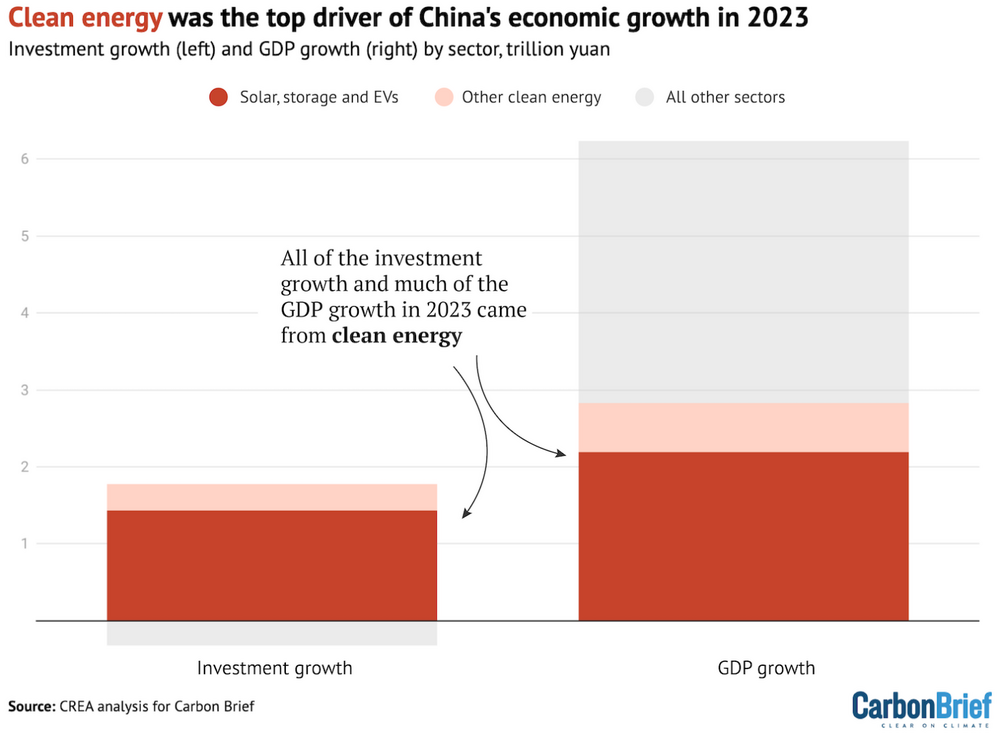
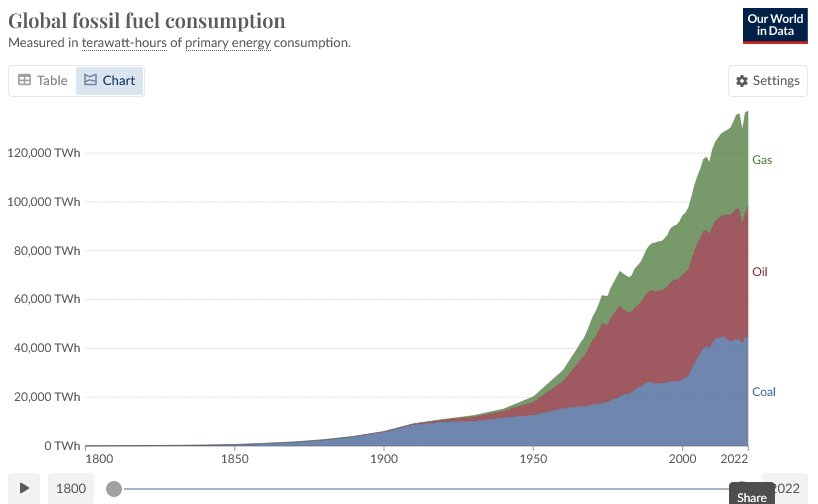
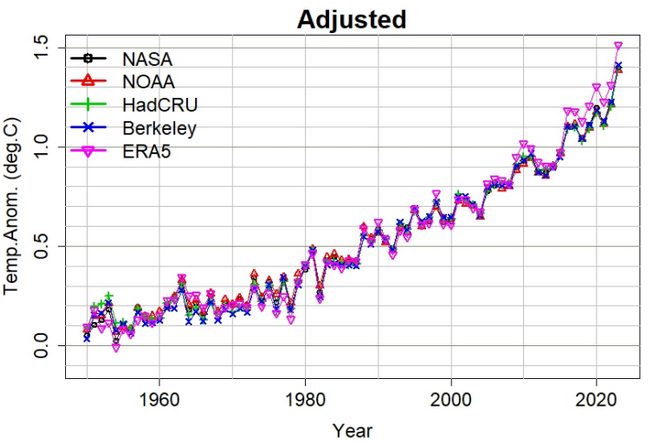
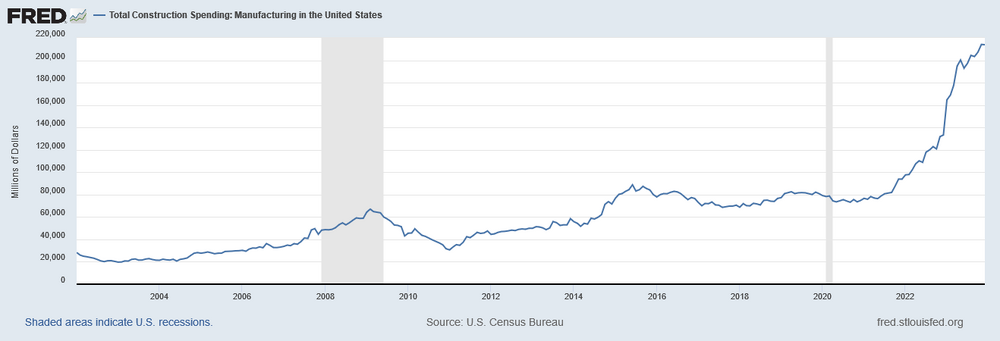
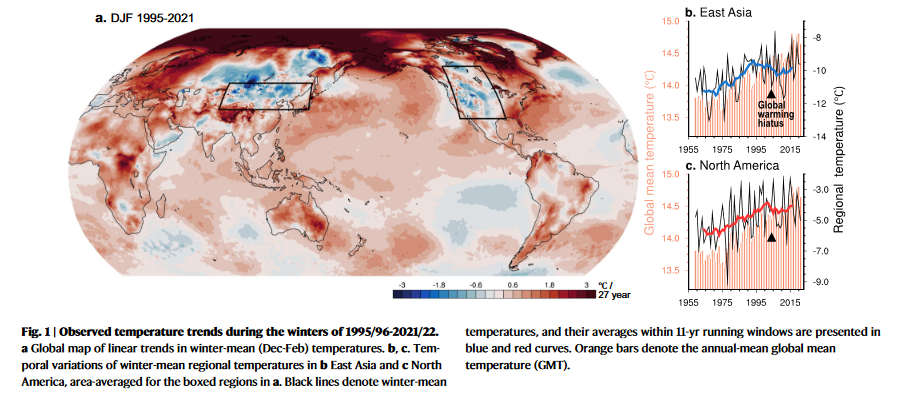
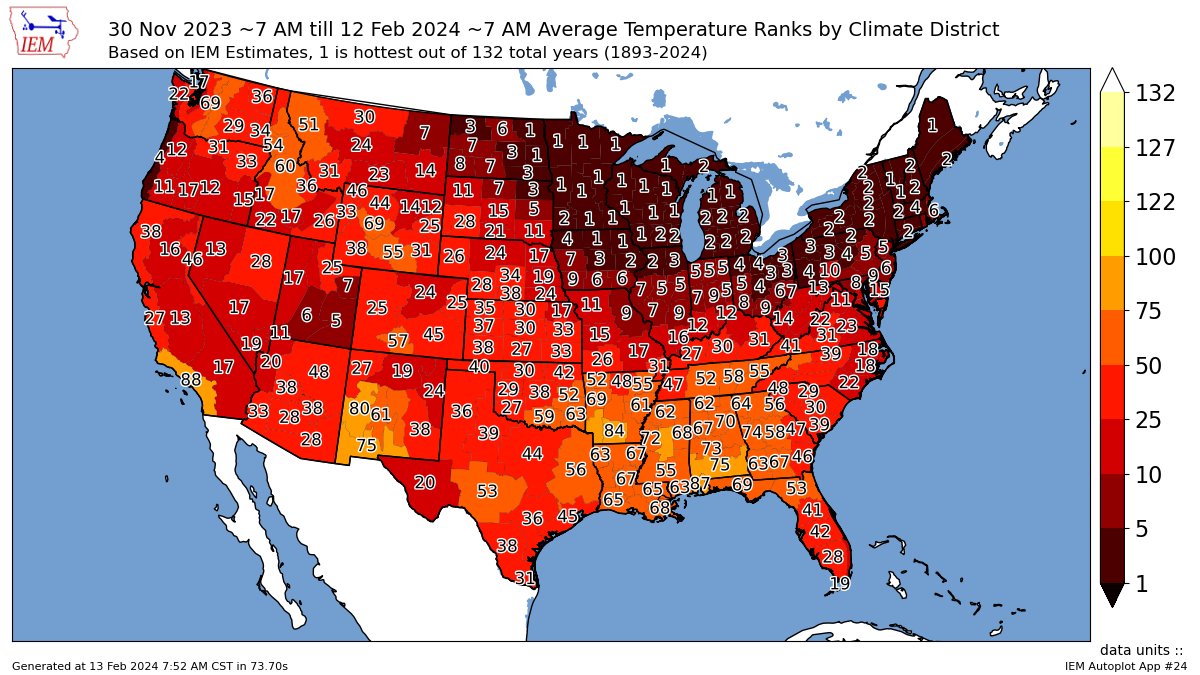
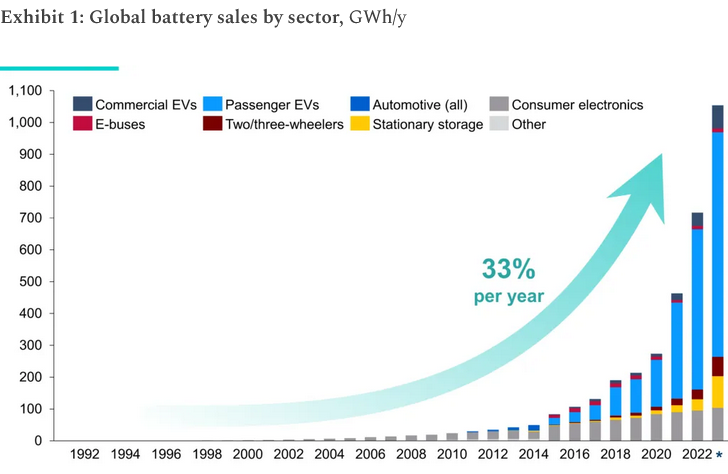
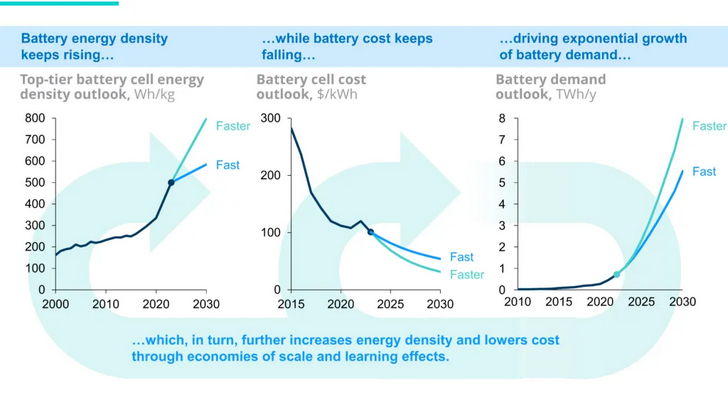

2024-2025 La Nina
in Weather Forecasting and Discussion
Posted
From Kris Karnauskas twitter, tropical mean SST anomaly averaged on latitude bands. Shows the impact of long-term warming and enso on tropical and sub-tropical SST. Ninos warm the tropics and sub-tropics while La Nina cooling is more focused on the tropics with less impact on the sub-tropics. The subtropics haven't been the same since the 15/16 nino. We'll see what the aftermath of this nino is.
edit: Added a plot showing trends for the east and west Pacific. Of course the east Pacific has the biggest enso effects.